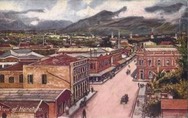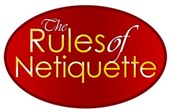Census data, birth and death records, city directories, immigration and travel data, military data, wills, probates, land, tax, etc data that are online or on microfilm in the US are not available in Japan. Unless you have relatives in Japan who are willing to share family information with you, the only option left for us to find out more about our ancestors is to obtain the ancestors’ kosekitohon.
Since about the mid-1800s, the Japanese government required their citizens to register all their vital information to be collected by village and city officials. The document is called the kosekitohon and is a sort of census record that includes birth, deaths, divorces, and adoptions of everyone living in the household. Prior to the mid-1800s, I understand that the same sort of information was kept by each feudal estate at the village and town level. I am not sure where or what became of these “han” or feudal estate records. The ones called kosekitohon is available from the Japanese government.
Prior to 1947, kosekitohon records were kept in an extended family system under the name of the head-of-household and his honseki (legal domicile). After 1947 the meaning of household was changed to only include the husband, wife and children.
Japanese Vital Records
kosekitohon is the Japanese vital records or family registry. You are only eligible to apply for an ancestor whom you are directly descended from.
honseki is the legal domicile of the koseki holder or legal residence in Japan of your ancestor
kanji spelling of your ancestor’s name
The best information that I have found for applying for kosekitohon is on the Family Search site. I am writing about my experience in applying the my ancestors kosekitohon or sometimes some of the offices have called them josekitohon. To tell you the truth, I cannot tell the difference.
Japanese vital records are not available online or on microfilm. Searching for your Japanese ancestors is challenging. What makes it challenging is that each city hall has their own special koseki request form. Some city halls will accept querying E-mails in English, others will not. Some city halls will only accept mailed applications. Some city halls will accept applications in English, some will not. The final request is always going to be a mailed application with all the required documents.
Which city hall to be queried is determined by your ancestors’ honseki. It is not enough to know that your ancestor was from some province in Japan. You need to know what his legal domicile was in Japan. Unfortunately, most of our ancestors did not provide that for us.
In my experience, the Japanese vital records system is paternal ancestor oriented. Tracing female ancestors can be daunting and slightly convoluted. First you must find her father’s name and honseki. The way that I proceeded was to first obtain her husband’s kosekitohon. Locate the marriage entry on the kosekitohon. The female ancestor’s father, mother and honseki is noted on the kosekitohon. Using the information recorded on the husband’s kosekitohon, I applied for the female ancestor’s father’s kosekitohon.
When you have found the city hall where your ancestors’ records may be kept, there is one last thing that may not be foreseeable. The ancestors’ records may have been deleted.
Update as of 8 Aug 2016: According to the koseki office in Hiroshima, prior to 2010, joseki (all the people on the the koseki page have died or been moved to another person’s koseki) was destroyed after 80 years. Due to changes in regulations in 2010, the joseki are now destroyed after 150 years. Unfortunately, some of our old ancestors’ records were caught in the 80 year destruction cycle.
Read the information on the Family Search site and determine for yourself whether or not you are up for the challenge. Be aware that each request will cost some money. I was told that a kosekitohon costs ¥750 plus International postage. For each kosekitohon that I have applied for, I’ve always enclosed about $20 to be on the safe side because of the dollar to yen conversion rates are at the time. The change will be provided in Japanese stamps.
My experience, required documents for a kosekitohon application are:
Find the correct city hall based on the honseki. This is probably the most difficult task; however, according to the Family Search site, various city halls contain a kosekitohon menu item. (I have no experience looking for Japanese city halls.)
Kosekitohon application form. This form may have to be filled out in Japanese if the city hall you are applying to does not accept applications written in Engish. Don’t forget, regardless of whether the form is to be filled out in Japanese or in English, the honseki and ancestor’s name must be in Japanese. It might be valuable to enlist the help of a translator.
Documentation that identifies who you are. A copy of your passport is acceptable.
Documentation that identifies your address. A copy of your Drivers License is acceptable.
Documentation that explains your connection to the ancestor who’s kosekitohon you are applying for. You must be a direct descendant of the ancestor. You cannot apply for the vital records of an uncle, cousin, brother, etc. Copies of your birth certificate, your parents’ birth certificate, kosekitohon of related ancestors are very useful in documenting your connection to the ancestor.
US International Postal Money Order
Self-addressed envelope. Kosekitohon is printed on paper that is a little longer than the US letter paper, but not as long as the US legal paper.
Professional Genealogist in Japan
I have no first hand knowledge of what it costs to hire a genealogist in Japan. I have looked up genealogists on the Japanese web (Japanese Yahoo or Google). There are quite a few available, but since I can’t read Japanese very well, I’ve had to ask my distant cousin for his advice. My distant cousin says that most are very expensive in proportion to the amount of information they are able to provide.
Where to apply for the kosekitohon. This is the part I’m really unsure about. I have no first hand knowledge. So if you think that the information is incorrect, please write to me and tell me what the proper procedure is. Since it seems to be a county seat function (and I stress seems to be), look for the nearest county seat closest to the ancestor’s honseki. Write to the mayor of the town requesting assistance in obtaining a koseki for your ancestor. Many times the larger county seats have a multi language website.


